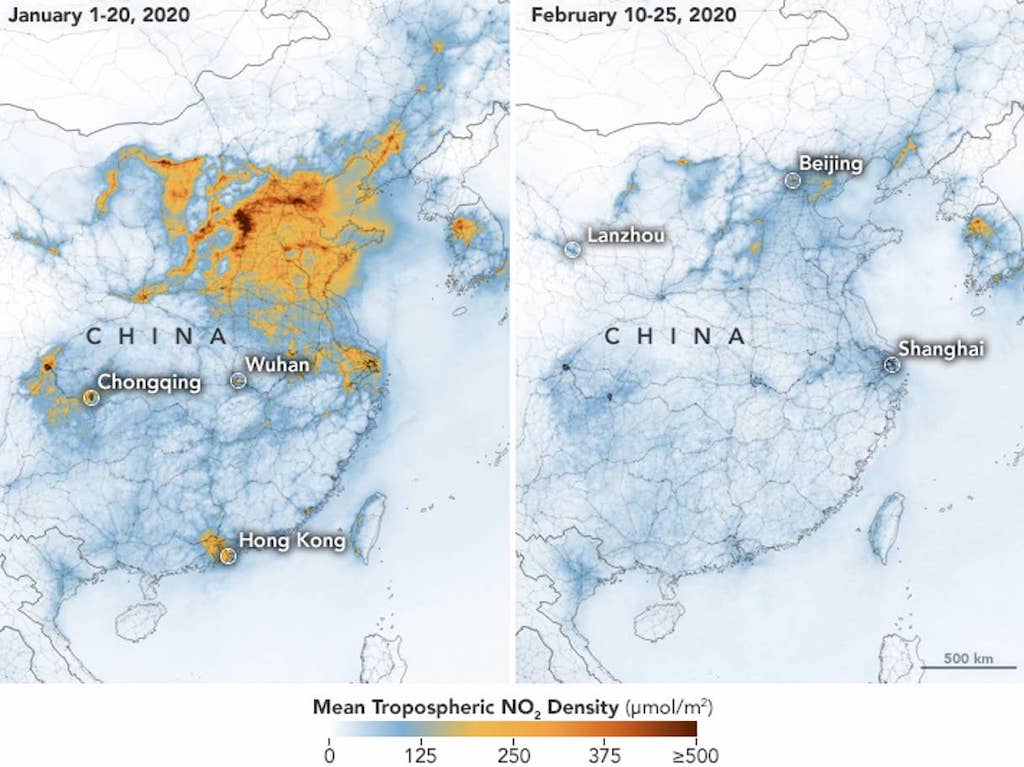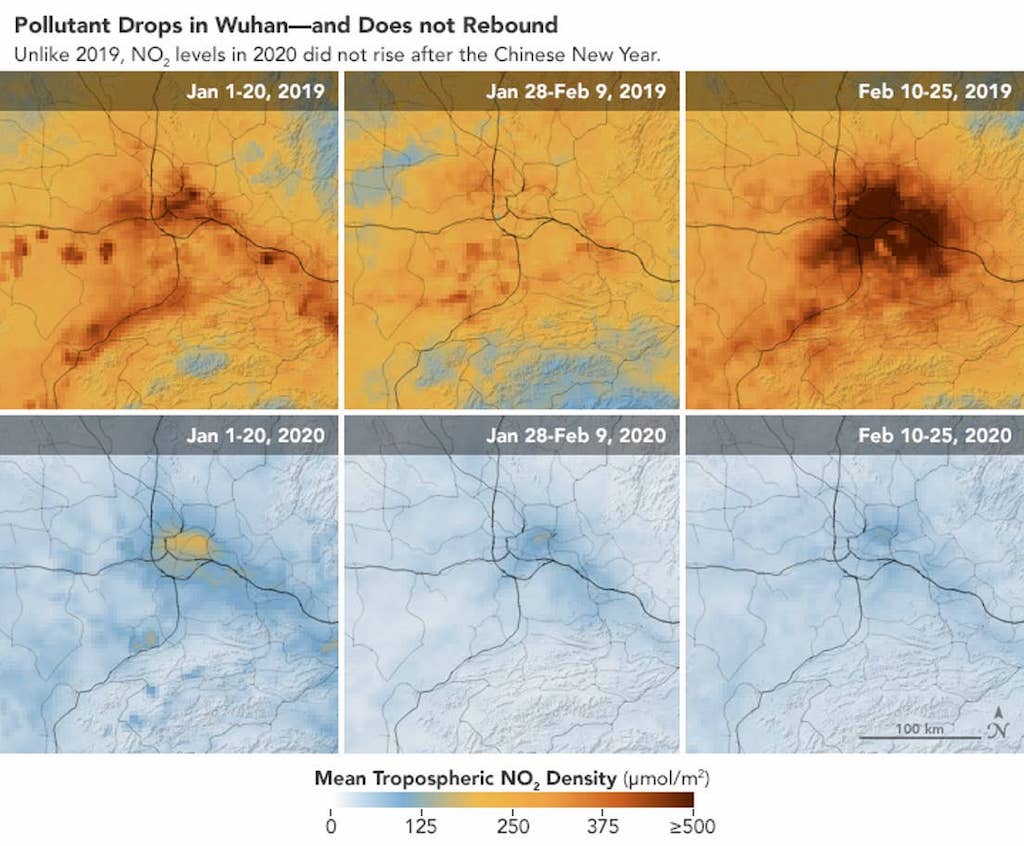3 Mins Read
Satellite images provided by US space agency NASA has shown a major drop in pollution levels in China since the outbreak of the novel coronavirus or Covid-19. The decline in air pollution happened as Chinese authorities extended the Lunar New Year holiday, leading to a virtual standstill in fossil fuel-powered industrial activity and cut off transport links across multiple megacities in the country as a part of its effort to contain the spread of the epidemic. While the images reflect a welcome change for the country that has suffered from an ongoing severe air pollution crisis, experts warn that the lull in pollution is likely to be a short-term phenomenon and action must be taken to keep in check the health, environmental and economic consequences of continued inaction against pollution and climate change.
NASA’s maps have shown a dramatic drop in pollution over key areas in China after the coronavirus outbreak led to authorities’ decision to shut down massive industries, implement strict travel restrictions and work-from-home measures to contain its spread. As of press time, the death toll of Covid-19 has surpassed 3,000 and infected nearly 90,000 people across 68 countries.

The satellite images show now levels of nitrogen dioxide, a toxic pollutant generated by vehicles, power plants and factories have plummeted over the course of January and February this year. According to the space agency, the fall in the levels of pollution first emerged in Wuhan, the epicentre of the outbreak, and then eventually spread across the entire country.
“This is the first time I have seen such a dramatic drop-off over such a wide area for a specific event,” said air quality researcher Fei Liu at NASA’s Goddard Space Flight Centre.
It follows a recent report by global nonprofit Carbon Brief, which showed that lowered industrial output and dramatically reduced electricity demand had led to a massive cut in the country’s greenhouse gas emissions by an estimated 100 million metric tonnes – comparable to Chile’s annual emissions.
The news that China’s air pollution levels have dropped is much-welcomed news for some, especially since the latest Greenpeace-IQAir analysis found that nearly 90% of the world’s 200 most polluted cities are located in China and India. According to the report, Wuhan, the ground-zero of the current Covid-19 epidemic, alongside its neighbouring cities of Chengdu and Beijing were among the world’s most PM2.5 polluted megacities.

However, experts warn that despite the drop in both harmful air pollution and greenhouse gases that contribute to global heating, it is likely that the cut will only remain for the short-term. Once infection rates and protective regulations ease, China can quickly ramp up significant output as it still maintains its huge capacity in fossil fuel power generation and industrial sectors.
In addition, the central authorities have also planned an infrastructure-targeted stimulus package, which involves cash injections and support for various industries including industrial production, as reported by Bloomberg. This will have the effect of sustaining regular levels of coal use and increasing China’s cement and steel production capacity, which will in the long-run fuel the global heating crisis.
Read our earlier coverage of Covid-19 and tips on prevention here.
Lead image courtesy of Kevin Frayer / Getty Images.




